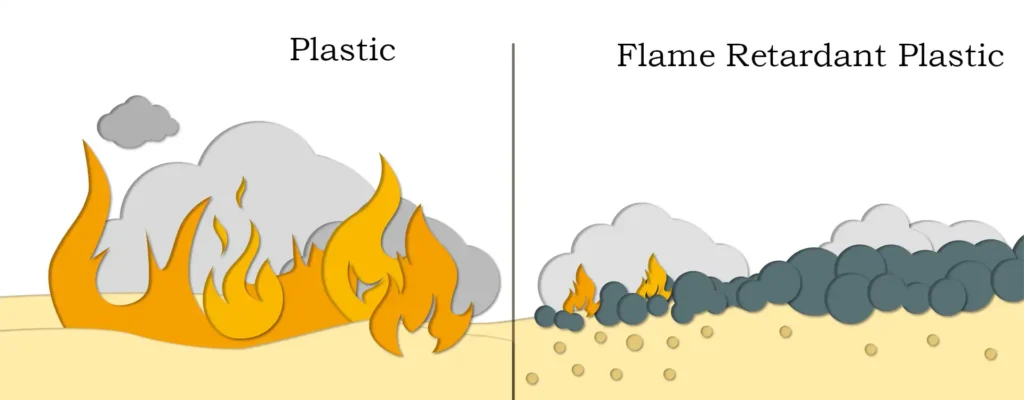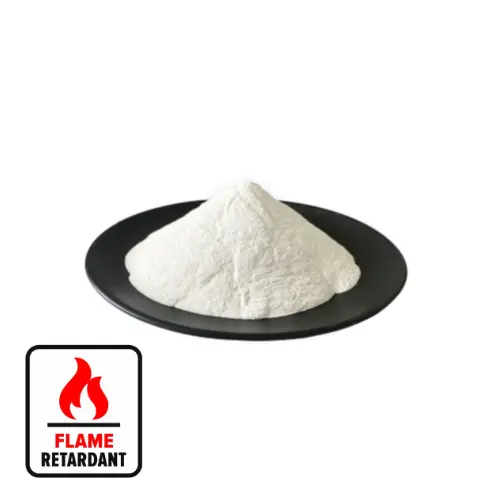Abstract
Synthetic materials are now widely used in traffic, transportation, construction, electrical and electronic, chemical and other fields, and play a great role in the construction of the national economy. However, synthetic materials are generally flammable, in order to solve and eliminate this hidden danger, flame retardants came into being. As inorganic flame retardants in synthetic materials, in addition to flame retardant effect, but also inhibit the role of smoke and hydrogen chloride generation, and give the material non-toxic, non-corrosive, and therefore widely used.
In today’s increasingly environmental protection requirements, inorganic flame retardants are showing strong competitiveness and development potential, of which magnesium hydroxide is an excellent variety of inorganic flame retardants. Magnesium hydroxide belongs to additive inorganic flame retardants, compared with similar inorganic flame retardants, has a better smoke suppression effect. Since 80% of fire deaths are caused by smoke asphyxiation, “smoke suppression” is more important than “flame retardant” in contemporary flame retardant technology. Magnesium hydroxide in the production, use and waste process are no harmful substances emission, but also can neutralize the acidic and corrosive gases generated in the combustion process, is a kind of environmentally friendly green flame retardant.

Magnesium hydroxide as a flame retardant material has many advantages:
(1) The decomposition temperature of magnesium hydroxide is high, and the ignition point is higher than aluminum hydroxide, which improves the heating temperature of polymer materials;
(2) MgO generated after combustion and dehydration is a refractory material and is an alkaline oxide that absorbs acidic gases;
(3) Strong heat-absorbing capacity and high flame-retardant efficiency;
(4) Low cost and easy to process in different polymer materials.
In recent years, magnesium hydroxide as a green flame retardant, the application is very large.
Application in flame retardant
Magnesium hydroxide is an important halogen-free environmentally friendly green flame retardant, flame retardant mechanism for the generation of stable coating layer of magnesium oxide and water vapor, flame retardant efficiency is low, to achieve a good flame retardant effect of its additive amount is generally as high as 50% to 60%, and at this time the mechanical properties of flame retardant composites and the processing of a serious decline in the performance of the material, and the method usually taken is the surface modification of magnesium hydroxide and magnesium hydroxide synergistic synergy Flame retardant.
Magnesium hydroxide flame retardant can not only be used alone, but also with other synergistic agents used in combination, such as magnesium hydroxide / red phosphorus, magnesium hydroxide / zinc borate, magnesium hydroxide / carbon nanotubes and magnesium hydroxide / carbon black and so on. The synergistic flame retardant of magnesium hydroxide will not only obtain better flame retardant effect, but also reduce the amount of flame retardant, thus reducing the cost.
Magnesium hydroxide thermal decomposition temperature is high, higher than the current commonly used inorganic flame retardant aluminum hydroxide 140 ℃, can make the addition of magnesium hydroxide synthetic materials can withstand higher processing temperatures, which is conducive to speed up the extrusion speed, shorten the molding time, but also help to improve the efficiency of flame retardant. Magnesium hydroxide particle size is fine, the wear and tear on the equipment is small, which is conducive to extending the service life of the processing equipment, while the raw material is easy to obtain, low production cost, can be widely used in polypropylene, polyethylene, polyvinyl chloride, high-impact polystyrene and ABS and other fields.

